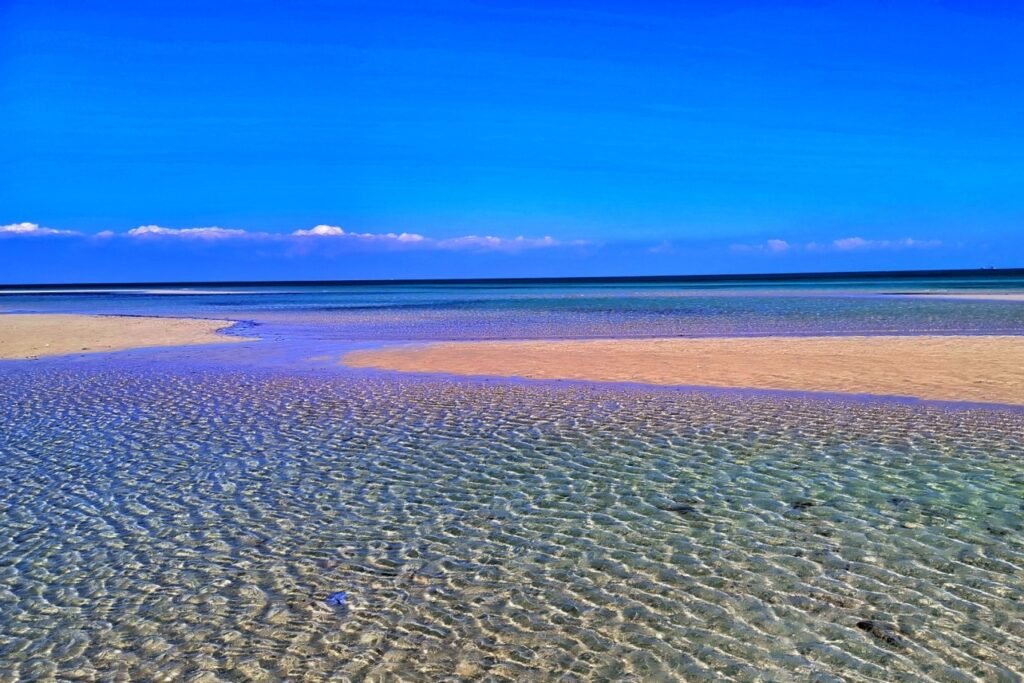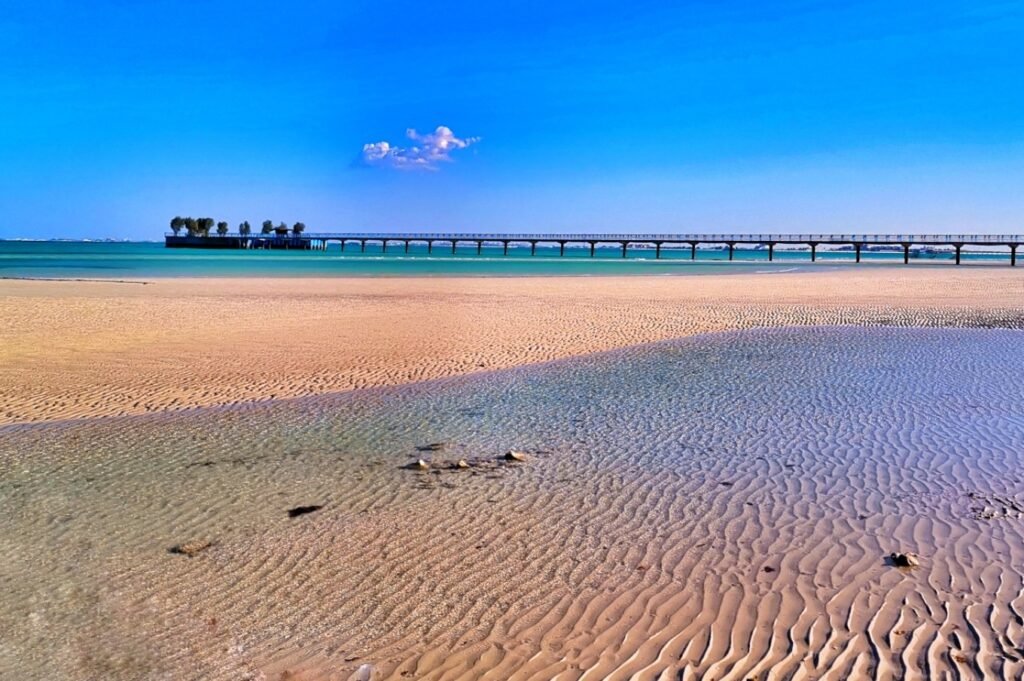Qatar is a tiny speck on the map, but due to its rapid rise and sudden wealth, it has become a familiar name. Though small, Qatar is far from quiet, often making global headlines with major events. Al Jazeera, Qatar’s news network, is the most open and free media outlet in the Arab world, comparable to the BBC and CNN. Known for its exclusive and explosive coverage, Al Jazeera has attracted worldwide attention. However, its involvement in supporting terrorist groups and its role in encouraging the Arab Spring led to diplomatic fallout, with eight Arab countries severing ties with Qatar in 2017, causing a political earthquake across the Gulf.
Qatar’s ability to disrupt is rare for a small country. It has eagerly hosted major sporting events, defeating larger nations to secure the Asian Games, the AFC Asian Cup, and the 2022 FIFA World Cup, which will likely be the first World Cup to be held in winter. The bid for the World Cup also triggered scandals involving bribery among football officials, causing turmoil within the sport.
In recent years, Qatar has aggressively developed its aviation industry, expanding its network to over 100 international routes and continuously upgrading its airport, which now handles over 31 million passengers annually, positioning Qatar Airways as a global leader.
What fascinates people the most about Qatar is its wealth. With the world’s highest GDP per capita, Qatar leads in both oil production and natural gas exports. The constant flow of energy revenues has rapidly transformed the nation and elevated the standard of living for its citizens. Qataris not only enjoy the highest incomes in the world but also unmatched social benefits. Native Qataris receive free education, healthcare, water, electricity, and much more, along with an annual allowance of hundreds of thousands of dollars. In short, Qataris live without financial concerns, enjoying the luxury of life without the need to work.
Qatar’s immense wealth has also elevated it to become a major global financial player, with the Qatar Investment Authority managing assets worth over $335 billion worldwide. The fund focuses on investing in developed nations, especially in Europe and the United States, with large property acquisitions in London, earning it the nickname “owner of half of London.” Despite the global economic slowdown, Qatar shows no signs of pulling back its investments, with ambitions to dominate the world of finance.
Qatar’s geographical position has played a role in its rise. Located on the Persian Gulf, it sits on a peninsula that extends into the sea, occupying a strategic and unique position. However, its tropical desert climate is less favorable, with hot, dry conditions and summer temperatures exceeding 50°C. Without economic incentives, few would willingly endure such a harsh environment. The best time to visit Qatar is between November and March, when the weather is cooler. We were fortunate to experience two rare winter showers during our trip, a stark contrast to the oppressive heat I had encountered during previous visits to the Middle East. It was like moving between two extremes—scorching heat and refreshing coolness.
The desert, though dry, offers its own beauty. Amid the arid landscape, life flourishes. Qatar’s natural wonders include endless dunes, mangroves around Purple Island, migrating flamingos, and the exhilarating sight of camel races with riders urging their animals toward victory.
Despite its small size, Qatar offers a surprisingly large number of attractions. Over the course of our eight-day road trip, we explored the entire peninsula from east to west and north to south, leaving no stone unturned, even visiting lesser-known sites omitted from travel guides. It was a thorough and rewarding adventure.
Overall, Qatar leaves an impression that falls somewhere between the conservatism of Iran and Saudi Arabia and the open, flexible customs of the UAE, lacking some of the distinctive charm typical of Arab cultures. Qatar is a typical Islamic state governed by a monarchical emirate system. Although native Qataris make up only 15% of the population, the majority of residents come from Muslim countries, ensuring that the entire country remains under the influence of Islam. The five daily calls to prayer and the numerous mosques serve as constant reminders that visitors are in a religious nation. However, as long as you are mindful of appropriate dress and social etiquette, avoid discussing religion or terrorism, and steer clear of misunderstandings or conflict, the prohibitions on alcohol and pork won’t significantly affect tourists.
Qatar offers a comprehensive range of tourism and leisure activities. Despite the intense heat, people are enthusiastic about outdoor sports. From sailing, kayaking, and surfing to diving, rock climbing, off-roading, and horse racing, adventurous activities attract participants, with the more thrilling ones drawing the biggest crowds. You can sail a traditional dhow to chase the sunset over the Persian Gulf or simply stroll along the Corniche, admiring one of the world’s most stunning modern skylines. Whether it’s the adrenaline of dune bashing in the remote desert or the slow, tranquil experience of camel riding across the barren landscape, Qatar offers something for everyone.
Visitors can dine at lavish restaurants with luxurious decor and world-class service, or sit on the grass enjoying a traditional meal of lamb and rice. You can spend an entire day shopping in sprawling malls filled with everything imaginable, or cheer with locals and people from around the world at a top-tier football match or racing event, sharing in the thrill of competition.
This blend of modernity and tradition, action and relaxation is precisely what makes the Qatar peninsula so captivating.
Transportation
For this trip, we opted for self-driving, so renting a car was the natural choice. Based on past experiences, we went for a rental package that included super full insurance. This not only covers the basic insurance but also takes care of broken windows and tire replacements, with roadside assistance available if needed, providing extra security and peace of mind.
Aside from driving, traveling independently in Qatar has become very convenient. To promote tourism, the country offers two types of free tourist buses:
- Hop-on-hop-off buses, commonly found in many tourist cities, which stop at major attractions in Doha. The difference here is that they are free.
- Shuttle buses connecting major museums, art galleries, and libraries, with services running every 30 minutes at no charge.
The metro, newly introduced for the World Cup, is probably the most convenient option. Qatar now operates three metro lines, serving the airport, the old town, Education City, stadiums, and the city center. Most major attractions are easily accessible by metro. Ticket prices are affordable, with a single ride costing 2 riyals, though fares may vary depending on travel time and distance.


Doha, the Capital of Qatar
Doha, as the capital and largest city of Qatar, is home to the country’s most attractions and most popular neighborhoods, making it the top choice for tourists. In recent years, Qatar Airways has introduced a Doha layover tour to attract transit passengers. Although these tours offer only a quick glimpse of the city, they provide a convenient way for visitors to get to know Doha.
We opted for a more relaxed experience, sharing only the joy of independent travel. Our tour began with the most picturesque part of Doha, the scenic Corniche. The hotel we chose was perfectly situated on the seafront in the city center, offering instant access to blue skies and turquoise waters. Strolling along the boulevard, we enjoyed the shade of swaying palm trees and felt the warm sun and gentle breeze accompanying us. Along the way, we admired the fishing boats docked at the marina and gazed across the bay at rows of modern skyscrapers.
Following the coastline from south to north, we visited Doha Port, MIA Park, Wanda Port, The Pearl-Qatar, Bidda Park, the Royal Palace, Palm Tree Island, West Bay, Katara Beach and Cultural Village, and Pearl Island. Whether walking leisurely along the coast or stopping to enjoy a refreshing drink, you can feel the warmth and pulse of the city at every step.
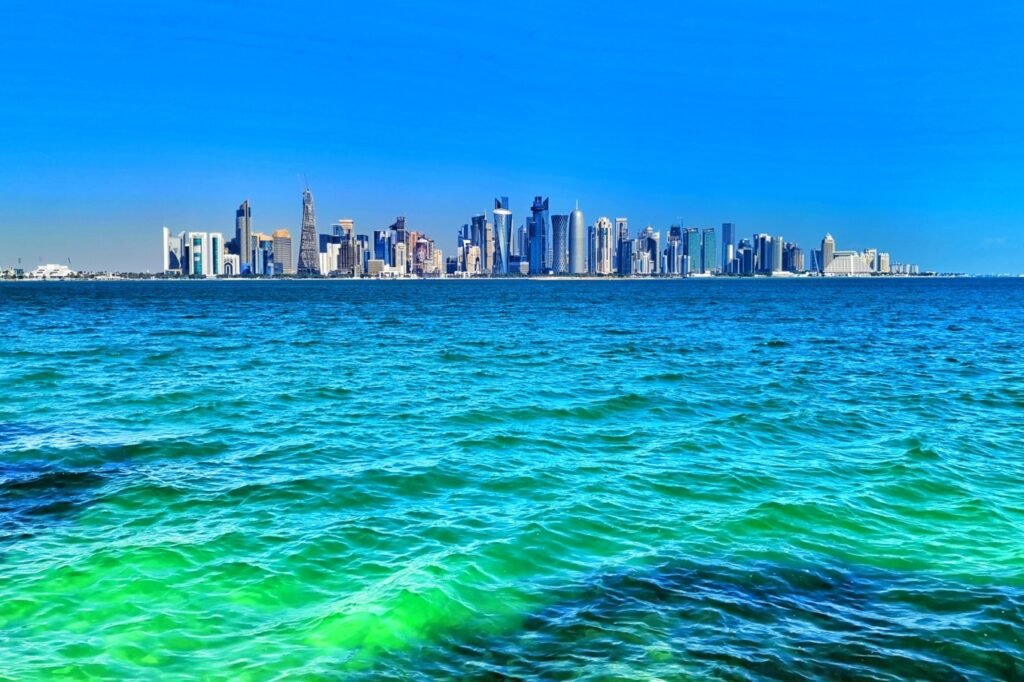

After returning from the Corniche and heading south to MIA Park, we focused on visiting the masterpiece of I.M. Pei—the Museum of Islamic Art. This museum, known for its geometric shapes and glass walls, is considered one of the most distinctive buildings in Doha. The smooth, off-white stone walls appear to rise like stacked blocks from the vibrant blue waters, complemented by a semicircular green park created through land reclamation, making the entire structure stand out.
The central hall of the museum is notably spacious and filled with natural light, and the exhibition rooms house precious art collections from Qatar and various Arab countries, offering both aesthetic appeal and professional significance. After exploring the museum, visitors can take advantage of the free shuttle bus service between museums to continue their cultural journey.
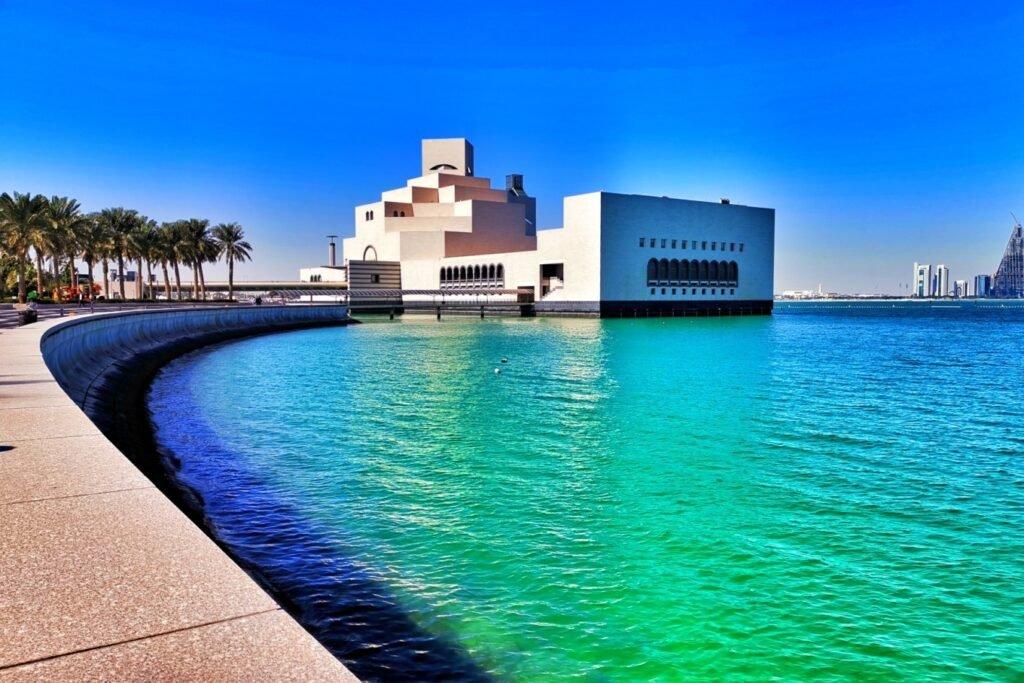

Next, we headed to the Qatar National Museum, located not far away. This museum is often referred to as the “Desert Rose” due to its unique architectural design. As a national museum, it naturally houses a rich collection of artifacts, including a wide array of jewelry, gold coins, and ceramics. However, its standout feature is the bold and innovative display methods used throughout the museum. By leveraging modern technology and multimedia presentations, it vividly showcases the history and culture of Qatar, providing a refreshing and imaginative experience for visitors.
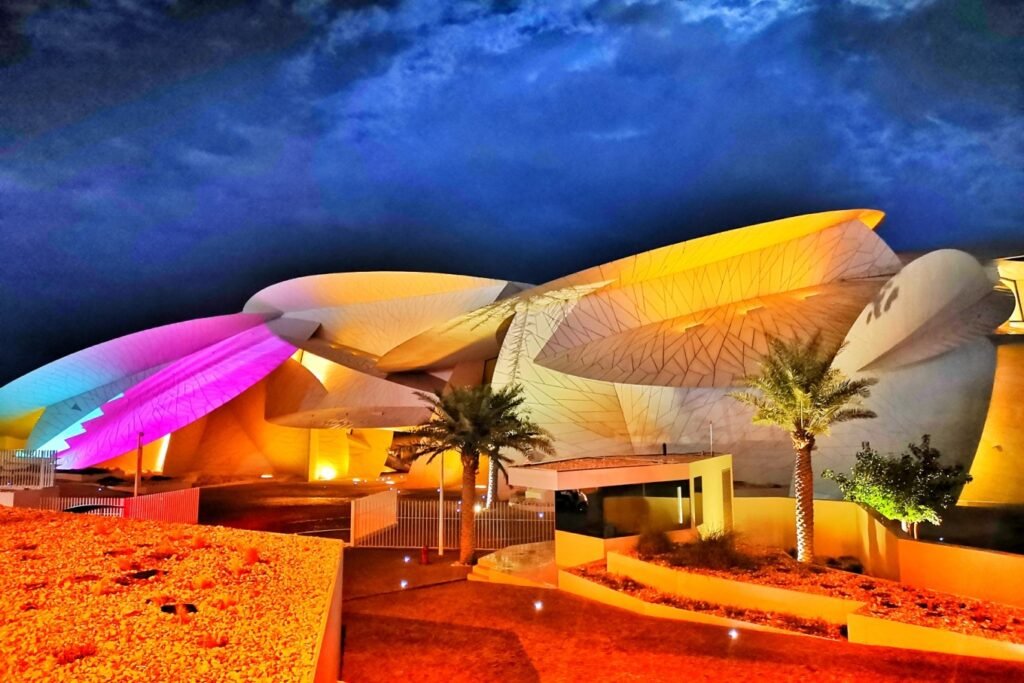
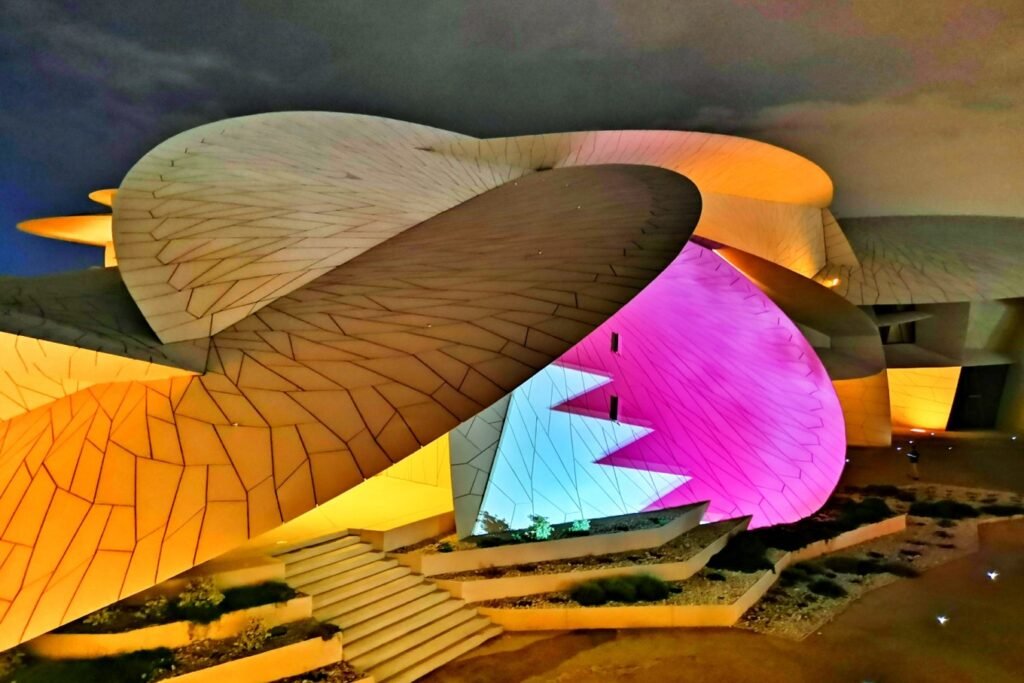
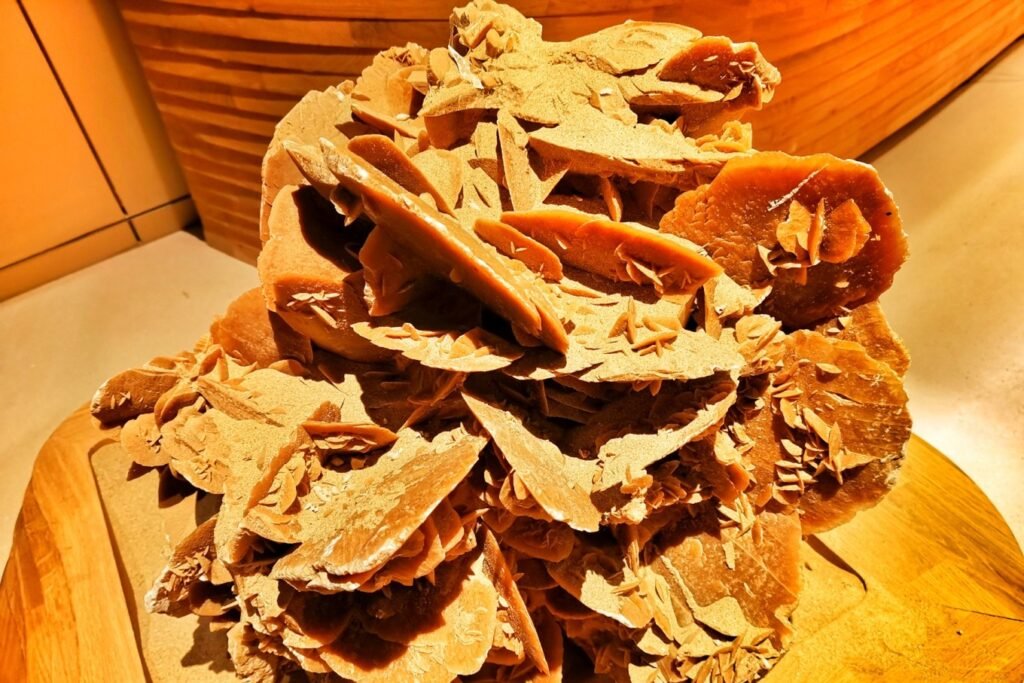

As night falls and the lights begin to twinkle, we made our way from the Abdullah bin Zaid Al Mahmoud Islamic Cultural Center to the Souq Waqif across the street. Exploring the old market at night felt like stepping into a tale from One Thousand and One Nights.
Wandering through the narrow streets adorned with Arabic architectural style, we were surrounded by an array of dazzling goods, captivating performances, and the enticing aromas of grilled meats wafting from the street-side restaurants, stirring our appetites. The scent of smoke in the air added to the enchanting atmosphere, making it easy to lose ourselves in the moment. The bustling lights and the lively traffic perfectly captured the essence of this vibrant night market.
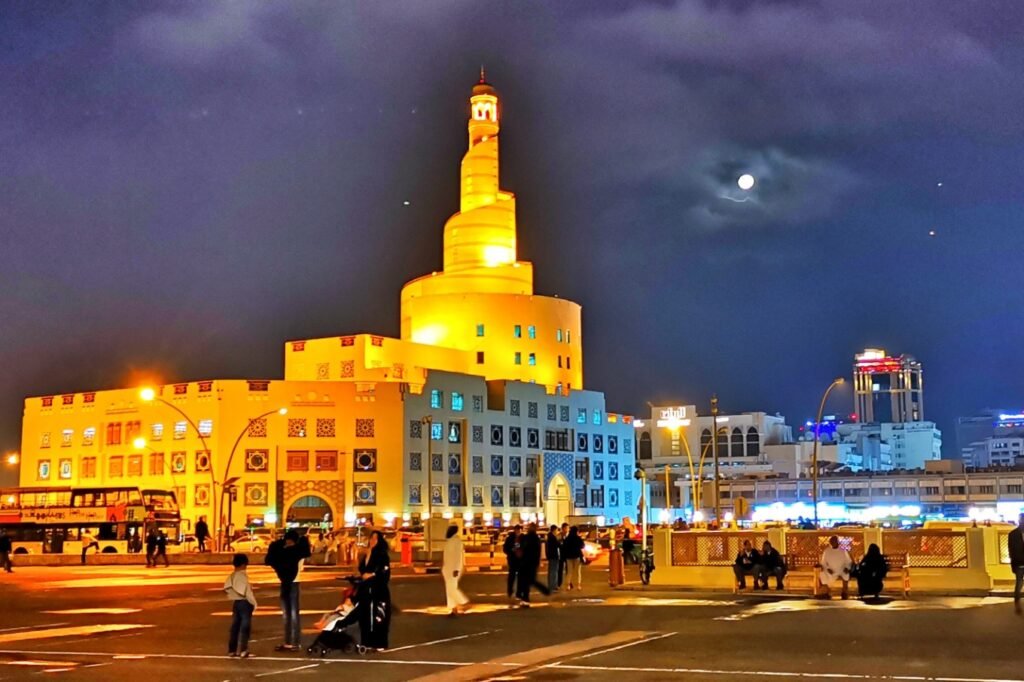
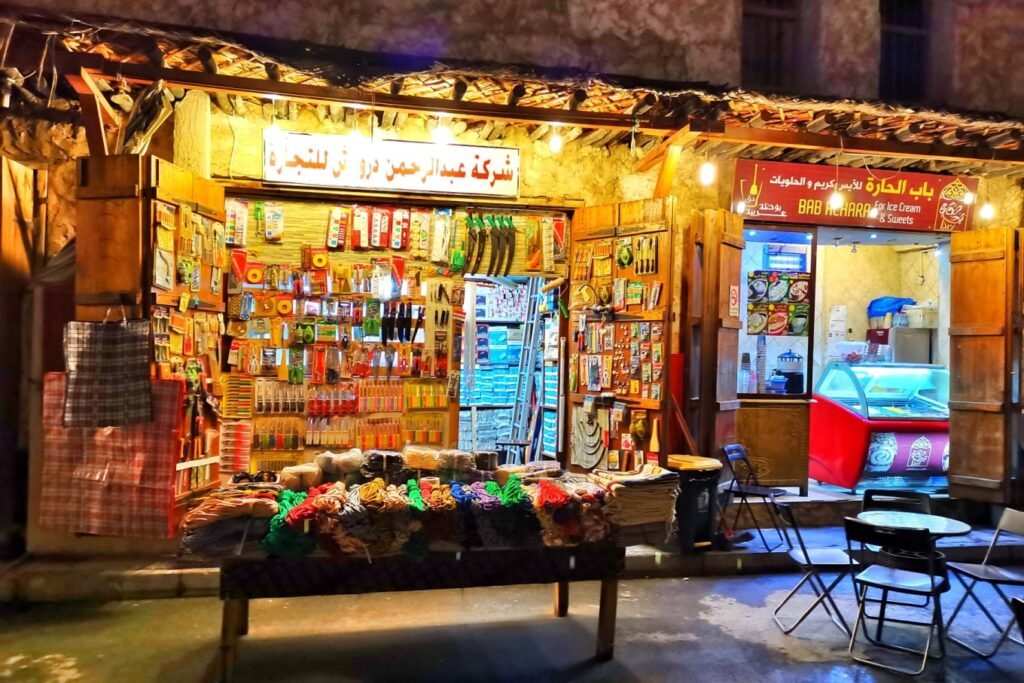
Pearl Island is adjacent to the Katara Cultural Center. One represents the past, while the other showcases the present—Doha, a modern metropolis characterized by luxury and opulence, where all the fashionable boutiques and high-end consumer goods converge. Similar to Dubai’s Palm Island, this area was also created through land reclamation, featuring upscale residences and private villas. The exclusive club area at the top is off-limits to visitors, ensuring a high level of privacy.


Another notable feature of Doha is its abundance of shopping malls, which could be considered among the largest in the world. Surrounding Doha, there are no fewer than ten enormous shopping centers, each larger and more upscale than the last. We visited at least six of them, and among the most representative is the Villaggio Mall. Located next to the hotel that hosted the opening ceremony of the Asian Games, this mall offers a wide range of stores, supermarkets, restaurants, cinemas, amusement arcades, an ice rink, and even an indoor amusement park.
One of its unique attractions is a mini gondola canal modeled after those in Venice, making it a rare spot for relaxation. Additionally, outside the mall is the Khalifa International Stadium, the main venue for the Asian Games, along with the sprawling Aspire Park, which is known for being the largest and most well-kept park in Doha.
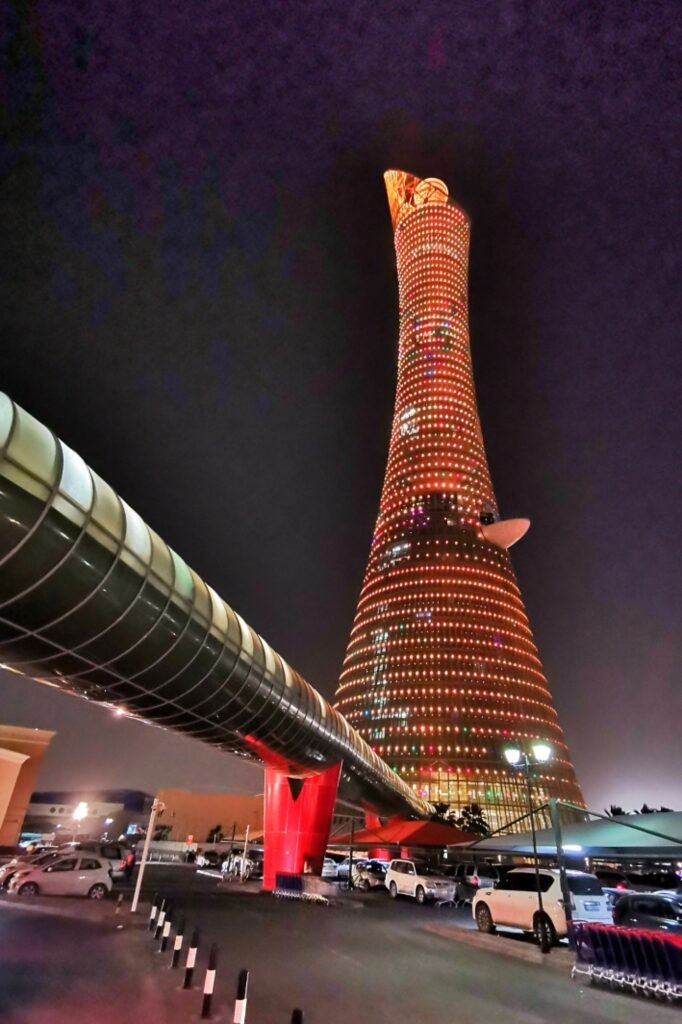

When in Doha, one cannot miss the Grand Mosque, also known as the Qatar National Mosque. Its designation as a national mosque highlights its significance and role in the country. Undoubtedly, it is the largest and most important mosque in Qatar.


The capital of Qatar, Doha, has rapidly developed in recent years, establishing itself as a major global metropolis. With wide avenues and towering skyscrapers, the city is in the midst of an impressive urban expansion. Most of the primary high-rise buildings and commercial towers are located in the West Bay area, transforming the entire bay into a stunning visual spectacle. This area has become one of Doha’s main tourist attractions and serves as the city’s center and heart, making it a must-visit destination when in Doha.
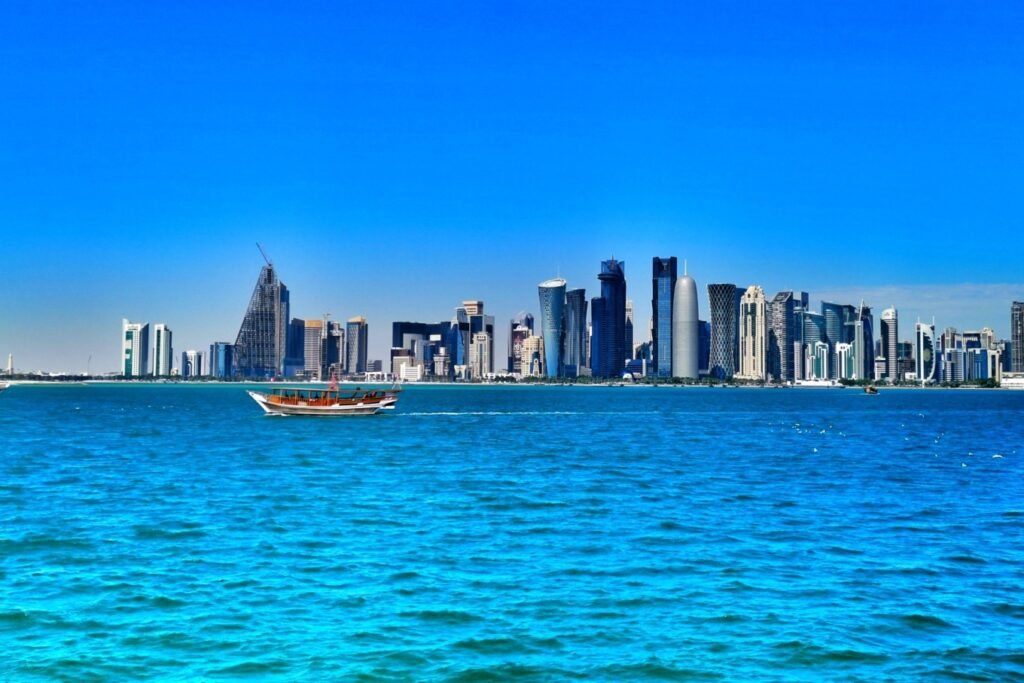
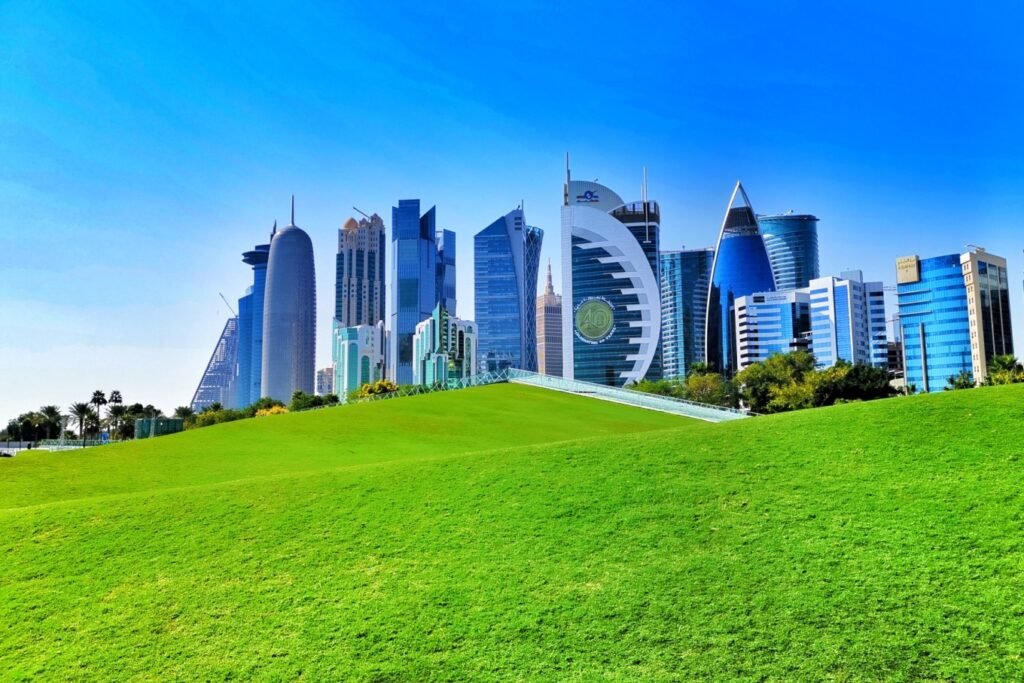
Al Wakrah – The Former Capital
Al Wakrah is an old town on Qatar’s east coast, located just a half-hour from Doha. Originally a small village centered around pearl diving and fishing, it gradually grew into a key trading hub for pearls and was once the nation’s capital. Along the coast, you can still find historic structures, including old mosques, forts, and the former port.
The attractions in Al Wakrah are conveniently clustered together, with its villages, markets, seafront promenade, and museums easily explored in half a day. One of the highlights is the old souq by the sea, known as the largest market in Qatar, even larger than the Souq Waqif. The market is divided by gender, with separate sections for gold, spices, handicrafts, hardware, clothing, and food stalls, creating the atmosphere of a charming old Arab town.
However, due to a decline in visitors, the area has become less lively over time. Notably, Hamad International Airport, Doha’s modern international gateway, is located nearby.


Mesaieed – Experiencing the Desert
Also known as Umm Said, Mesaieed is located 45 kilometers south of Doha and serves as an important oil port and industrial city in Qatar. While it boasts beautiful beaches, its defining feature is the vast, rolling expanse of barren desert. Much of Qatar’s land is covered by sand, and Mesaieed has the largest desert areas, with many parts still untouched by human activity. This makes it an ideal destination for tourism and adventure.
The area has started to develop desert tourism with several recreational activities, especially outdoor desert adventures. Visitors can explore the desert independently or book guided tours through travel agencies. Options include desert camping or guided expeditions led by experienced guides into the heart of the desert. For those seeking a milder adventure, camel rides offer a relaxed way to explore the landscape. More adventurous travelers can try dune bashing, either by hiring a professional driver or taking the wheel themselves, making for one of the most thrilling experiences in this desert nation.


Al Rayyan – Half of Qatar
To the east of Doha lies the coast, while to the west is Al Rayyan. Al Rayyan is vast, occupying half of Qatar’s total area, making it the largest administrative district in the country. Known for its abundant resources, it plays a vital role in Qatar’s economy, particularly with its precious water sources that provide irrigation, earning it the title of the “Gateway to Paradise.” Al Rayyan also offers diverse tourism resources, including visits to Education City and art museums, as well as opportunities to watch equestrian shows and camel races. During our stay in Qatar, we visited Al Rayyan several times.
Mathaf: Arab Museum of Modern Art
The Mathaf Arab Museum of Modern Art is one of the most prominent attractions in Al Rayyan, showcasing masterpieces by modern Arab artists, with a particular focus on spatial art. The museum primarily attracts art enthusiasts, so it is typically not crowded. During our visit, the exhibition featured works by Nigerian artists, offering a unique and immersive modern art experience.
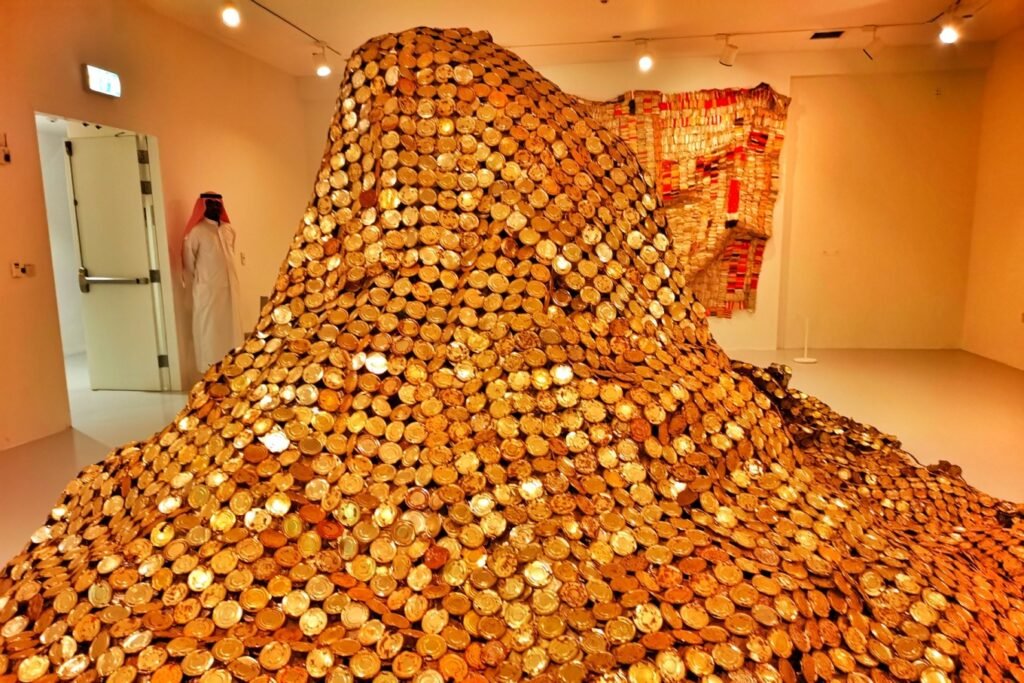

Lusail
The Lusail International Circuit is a world-renowned racetrack that has hosted numerous major racing events. With state-of-the-art tracks and comprehensive facilities, it accommodates both Formula racing and motorcycle races. Located not far from Qatar’s capital, Doha, we arrived to find only a motorcycle race taking place, which naturally lacked some of the usual excitement. The large grandstands were sparsely populated, but having come from afar, we didn’t want to miss the experience. So, we entered the venue and stayed through the race and the award ceremony, enjoying the thrill of the event.

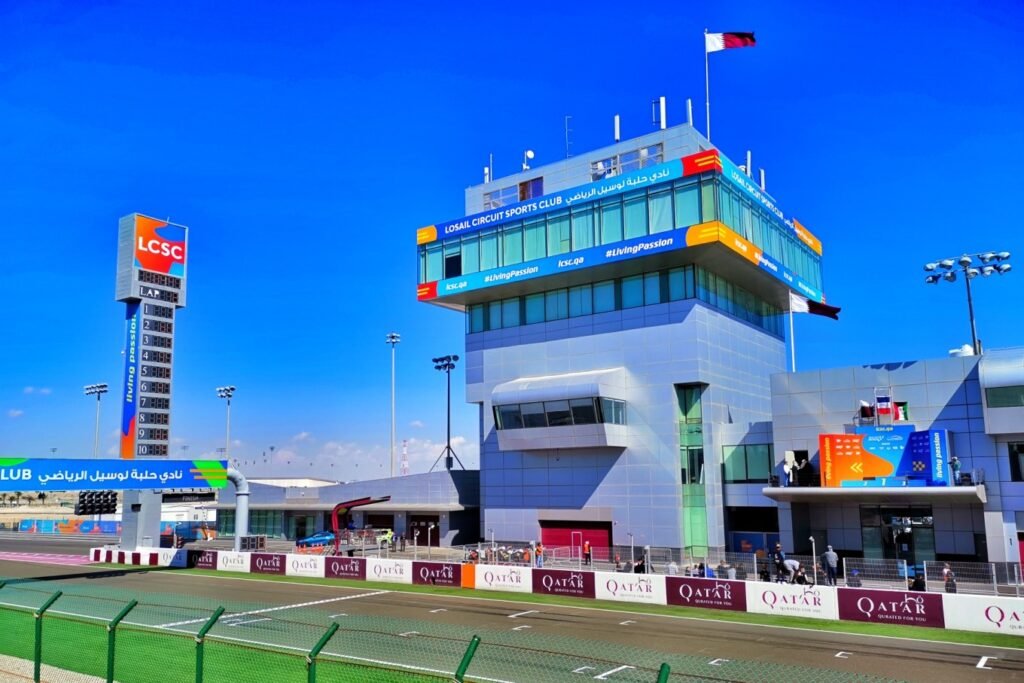
Umm Salal – The Walled Towers
Umm Salal, located adjacent to Al Rayyan, is famous for the Barzan Towers. These towers were built by Qatar’s fourth ruler and stand out for their unique architectural style. The two square-shaped towers rise from solid block-like walls, differing significantly from traditional Arabic fortresses. In the past, they played a crucial role in resisting Ottoman invasions and also served as an observatory for tracking the positions of stars and the moon.
Unfortunately, the site is now under private ownership and is not open to the public. Visitors can only view the towers from outside the surrounding walls.


Zubarah – A Fortress in the Desert
Zubarah Fort is a relic from the era of the Qatari kingdom, located in the northwestern corner of Qatar, within the town of Zubarah. Surrounded by vast, endless desert, the fort exudes a sense of desolation and historical melancholy. As one of the few well-preserved historical sites in Qatar, this ancient structure has been designated a UNESCO World Heritage Site.


Al Ruwais
The geography of the Qatar Peninsula resembles a pointed shield, with Al Ruwais at its very tip. This small city is compact, with surprisingly well-organized roads and beautifully decorated parks, giving it a lively and vibrant feel. The city’s most iconic structure is the Al Shamal Sports Club, designed to resemble an ancient fortress. Its striking red walls make the building stand out, leaving a lasting impression on visitors.


Fuwayrit – A Charming Beach
Located in northern Qatar along the Arabian Gulf, Fuwayrit Beach is a hidden gem with soft white sands, shallow waters, and vibrant shades of blue reflecting the changing light, creating a mesmerizing view. This untouched beach is an ideal destination for relaxation and retreat.
What makes it even more special is that it remains undeveloped and secluded. With no public transportation, proper roads, or even reliable GPS navigation, finding it is no easy task. Without persistence, we might not have discovered it. But the moment we laid eyes on it, we knew the journey was absolutely worth it.
